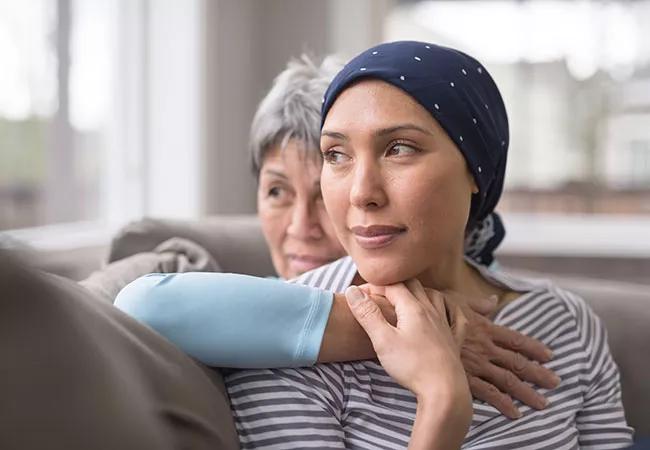Advertisement
Multi-center study indicates benefit is associated with risk stratification and the utilization of radiation therapy

A newly released study examining adjuvant therapy in patients with ductal carcinoma in situ (DCIS) following breast-conserving surgery confirms previous findings on the role of radiation and demonstrates when endocrine therapy may benefit patients, using a seven-gene predictive DCIS biosignature.
Advertisement
Cleveland Clinic is a non-profit academic medical center. Advertising on our site helps support our mission. We do not endorse non-Cleveland Clinic products or services. Policy
“Past studies such as NSABP B24 and NSABP B35 have looked at the role of endocrine therapy in DCIS and have shown a benefit,” says Chirag Shah, MD, a physician in Cleveland Clinic’s Department of Radiation Oncology, Co-director of the Breast Cancer Program and second author on the study. “However, we wanted to ascertain if all patients derive a consistent benefit and if some do not require endocrine therapy given that endocrine therapy is associated with side effects and additional costs.”
Patients with DCIS have traditionally been treated with breast-conserving surgery, followed by radiotherapy and adjuvant endocrine therapy based on multiple randomized and prospective clinical trials. However, those trials have failed to identify subsets of patients who do not benefit from adjuvant radiation therapy or endocrine therapy after breast-conserving surgery.
The multi-center study, which was presented at the annual meeting of the American Society of Clinical Oncology in June, evaluated the ability of a seven-gene predictive DCIS biosignature to assess the impact of endocrine therapy on 10-year ipsilateral breast recurrence risk after breast-conserving surgery alone or with radiation therapy.
“We looked at the three groups that the biosignature defines – low risk, elevated risk and residual risk – and evaluated the impact of adjuvant endocrine therapy for each, as well as the interaction of radiation and endocrine therapy,” says Dr. Shah. The three groups are defined by decision scores (DS) from the DCISionRT® test with integrated residual risk subtype (RRt) by PreludeDX: Low risk (DS ≤ 2.8), elevated risk (DS > 2.8 without RRt) and residual risk (DS > 2.8 with RRt). The groups were assessed for 10-year total ipsilateral breast recurrence risk by Kaplan Meier and Cox proportional hazards survival analysis.
The study included approximately 900 women who were treated with breast conserving surgery with or without adjuvant radiation therapy and with or without endocrine therapy. Results were as follows:
Advertisement
Dr. Shah says the results point to the need for conversations and informed decision-making with patients in all three groups.
“It spurs the discussion with low-risk patients about whether surgery alone is adequate given their low risk of recurrence,” he says. “For elevated-risk patients, perhaps a short course of radiation should be considered as a substitute for endocrine therapy. Similarly, do we need to adjust or intensify our treatment strategy in patients with residual risk, given that they are still at an elevated risk regardless of what we do?”
Dr. Shah and his colleagues would like to conduct follow-up research, tracking the study participants for 10 years to determine long-term outcomes in patients with breast-conserving surgery with or without radiation therapy and/or endocrine therapy.
Advertisement
Advertisement

Polygenic risk score could help predict who will develop this aggressive breast cancer

Platinum-eligible phase 3 trial of enfortumab vedotin and pembrolizumab yields ‘unprecedented data’

Extent of baseline burden impacts progression-free and overall survival

Further study warranted to better understand the clinical implications of these findings

Real-world study shows high response rates that are durable with commercial lisocabtagene maraleucel

Oral anticoagulants may be beneficial but need to be balanced against bleeding risks

First-of-its-kind research investigates the viability of standard screening to reduce the burden of late-stage cancer diagnoses

Study demonstrates ability to reduce patients’ reliance on phlebotomies to stabilize hematocrit levels